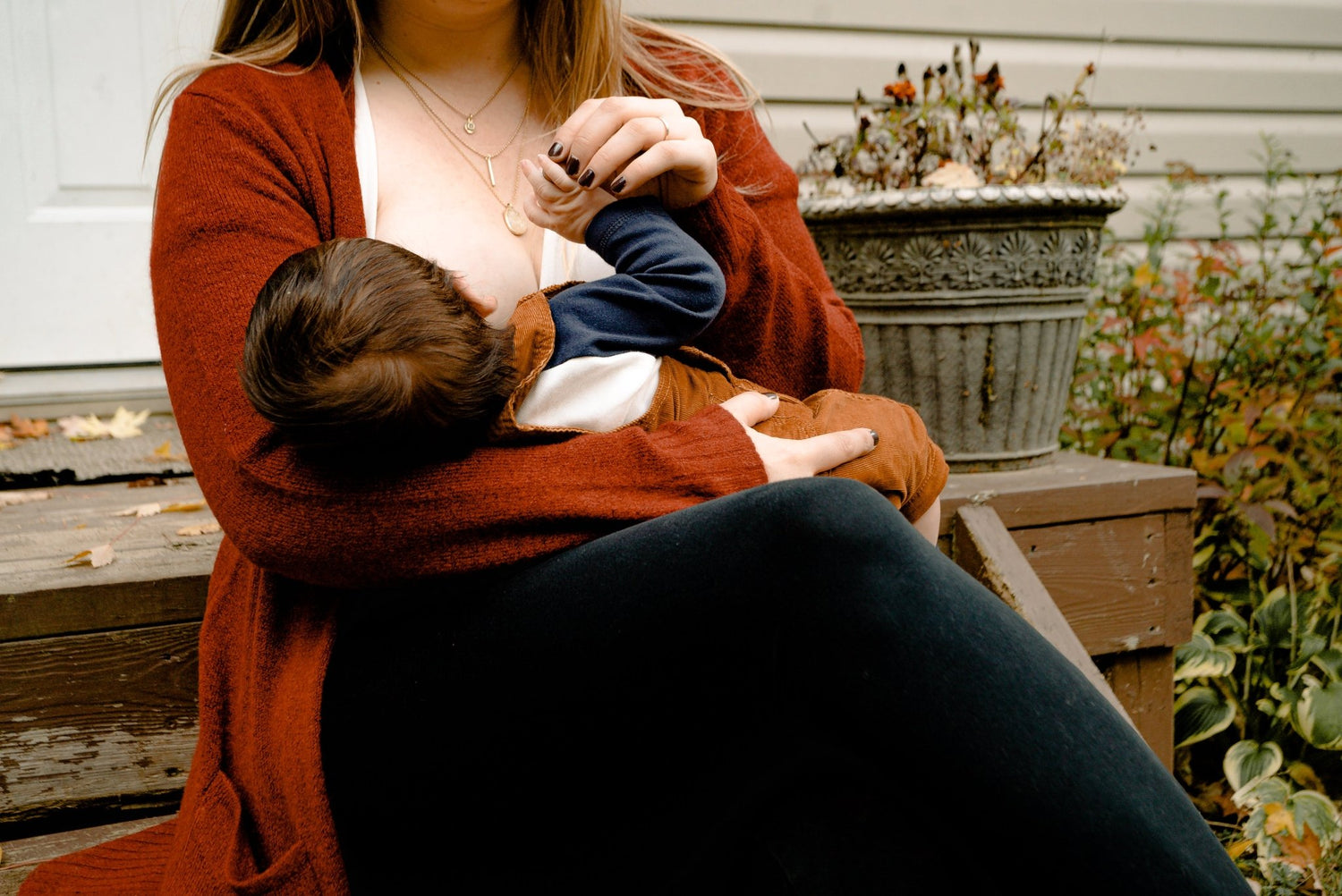White noise for babies: The perfect sleep aid with white noise
Sleep plays a crucial role in babies' development and well-being. Adequate and good sleep not only promotes physical growth, but also mental and emotional development. This is where “white noise” comes into play. White noise has been shown to help babies fall asleep and promote peaceful, restful sleep.
Table of contents:
|

1. What is white noise?
White noise is a uniform sound that covers all audible frequencies at once. It resembles a constant, monotonous background noise that is perceived as calming and relaxing. It is often described as a mixture of different sounds such as rain, the sound of the sea or a hairdryer.
2. How does white noise work?
White noise has a calming effect on babies in several ways. First, it can mask background noise, such as traffic noise or loud noises in the house, that could wake up or disturb the baby. Secondly, the monotonous sound creates a familiar environment reminiscent of the time in the womb. This can give the baby a sense of security and help them fall asleep faster. Thirdly, the sound helps put the baby into a deep and restful sleep.
3. Benefits of White Noise for Babies
Studies have shown that white noise has a positive effect on babies' sleep. This results in some advantages.
3.1. Memory of the womb
White noise is similar to the sounds a baby hears in the womb. It is reminiscent of familiar surroundings and can convey a feeling of safety and security.
3.2. Masking background noise
White noise can mask disturbing background noises such as street noise, loud conversations or sudden noises. This will distract the baby's attention from these sounds and make it easier for him or her to relax and fall asleep.
3.3. Improvement in falling asleep and sleep duration
The constant sound of white noise can help the baby sleep more deeply and uninterruptedly. It can increase sleep duration and reduce the likelihood of sleep interruptions because the baby is less sensitive to quiet noises.
It can also help create a familiar and consistent environment for the baby. This can be particularly helpful if the baby is sleeping in a new environment, for example while traveling or in an unfamiliar room. White noise creates a familiar background sound that reassures the baby.
4. Using white noise
4.1. Types of white noise
There are different types of white noise you can use for your baby. This includes:
- Nature Sounds: Popular types of white noise include nature sounds such as the sound of the ocean, raindrops, gentle breezes, or the sound of a waterfall.
- Electronic devices: There are also special devices that generate white noise, such as baby monitors with integrated noise machines or special white noise devices. These devices offer a variety of options and settings to find the perfect noise level for the baby.
You can get a 10h version of white noise in the form of sounds that resemble the womb in this video:
4.2. Applications of white noise
You can use white noise at different times and situations to calm your baby and help him sleep. Here are some possible uses:
- To help you fall asleep: Play the white noise while you rock your baby to sleep or put them in their bed. The monotonous sound can help him relax and fall asleep more easily.
- During the day for calming: If your baby is restless or crying, white noise can have a calming effect. Play it to create a relaxing atmosphere.
- On the go and traveling: White noise can help mask unfamiliar noises in the environment and provide baby with a familiar sound pattern. Use portable devices or apps on your smartphone.
5. Safety considerations when using white noise
There are some important safety considerations to consider when using white noise to aid babies' sleep.
First of all, it is important to adjust the volume of the noise appropriately. The sound should be soothing without scaring or disturbing the baby. Too high a volume can strain the baby's sensitive hearing and have undesirable consequences. It is recommended to adjust the volume to a comfortable level that gives the baby a feeling of security without overstimulating him.
It is also important to select appropriate devices or apps that play white noise. Make sure the devices produce high-quality white noise and do not contain any unwanted noise or interference that could interfere with the baby's hearing experience.
Another important aspect is monitoring the baby's sleep while using white noise. Every baby is unique and reacts differently to the sounds. Some babies like it more than others and fall asleep more easily. Others feel uncomfortable or irritated by the noise, so they cannot calm down and fall asleep. Always monitor your baby's reactions so that you can be sure that the white noise is really helping your baby to sleep peacefully and restfully.
6. White noise: Alternative sleep aids for babies
If your baby feels disturbed by white noise, there are other methods besides white noise that can help your baby fall asleep and stay asleep. Here are some alternatives:
-
Rocking or rocking the baby: Gentle movements can have a calming effect and help the baby fall asleep. The baby can be rocked gently in your arms or rocked back and forth in a cradle.
-
Soft background music: Soothing melodies or quiet music create a relaxing atmosphere. Play quiet and gentle music such as lullabies or relaxing sounds.
-
Soothing massage or stroking: A gentle massage or loving touch can prepare the baby for sleep. Use gentle strokes and pay attention to your baby's reactions. For example, gently massage your feet or back.
-
Sleep rituals: You can give your baby a warm bath, read him a story, or sing a soothing lullaby before bed. Choose rituals that give the baby security and repeat them every evening.
It is important to note that not all methods work. Every baby is unique, so it's advisable to try different practices to see which suits your baby best.
When it comes to your baby's sleep, different approaches and techniques are possible. White noise can be an effective addition to creating a calm and relaxing sleep environment. Listen to your baby, experiment with different methods and find what works best for you. A good night's sleep for your baby also means a restful time for you as a parent.




